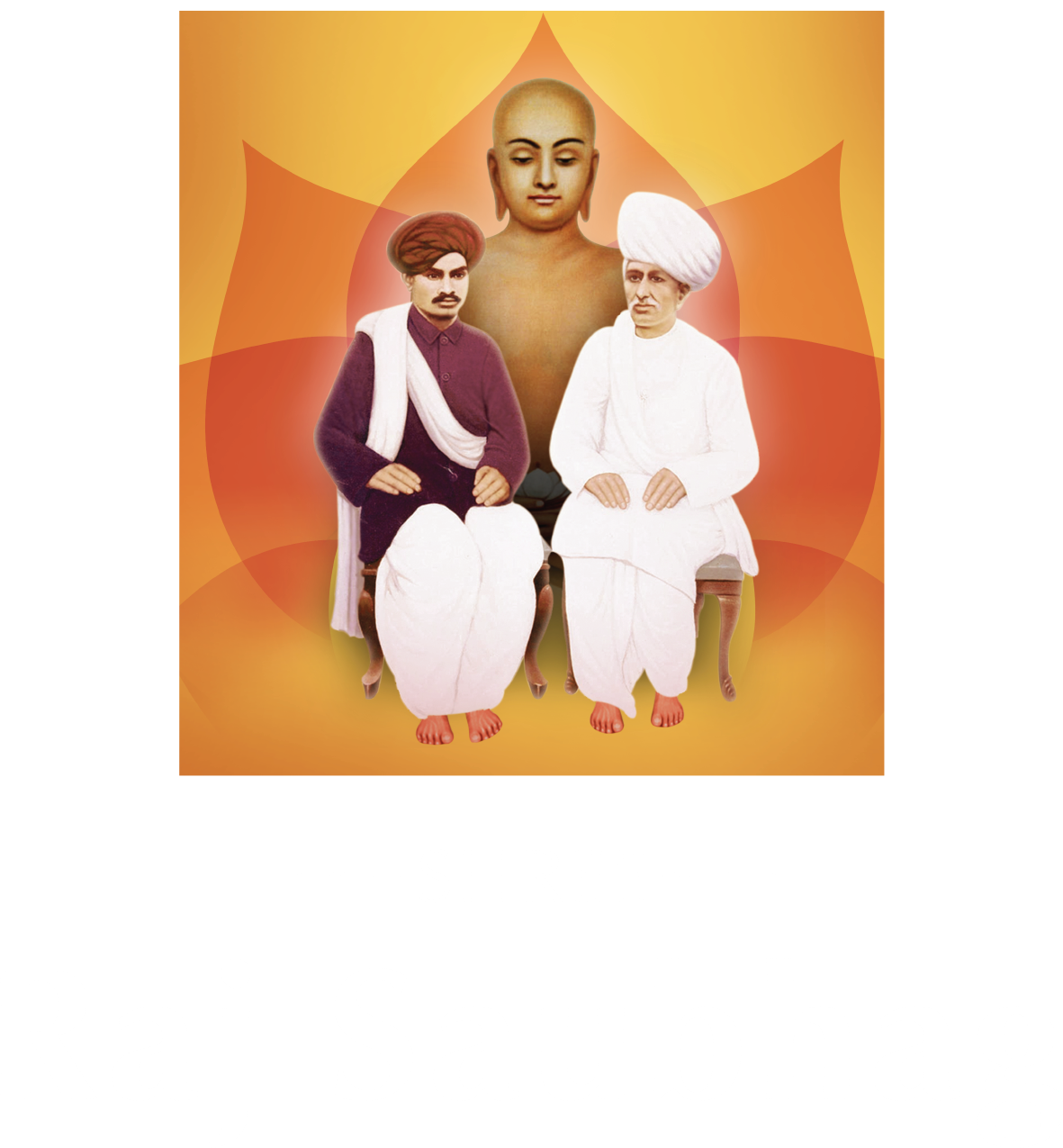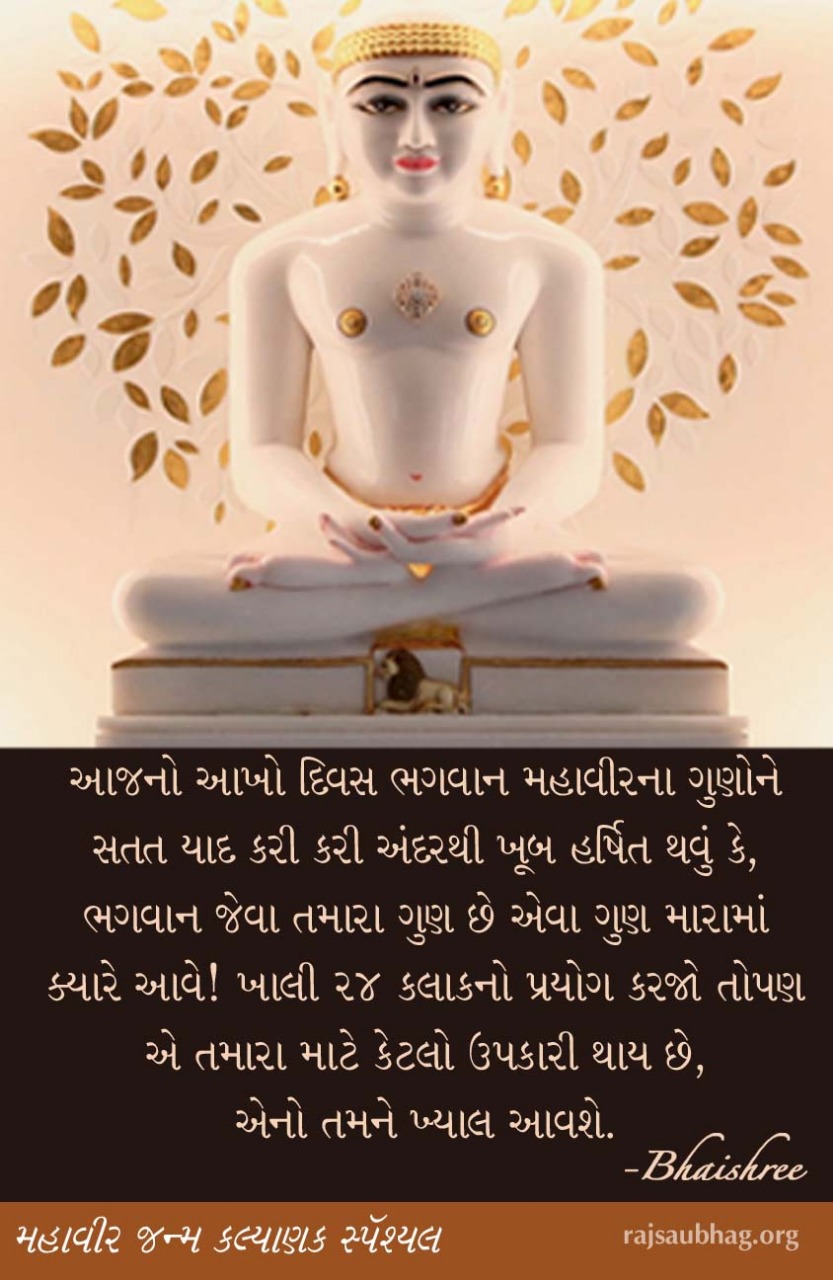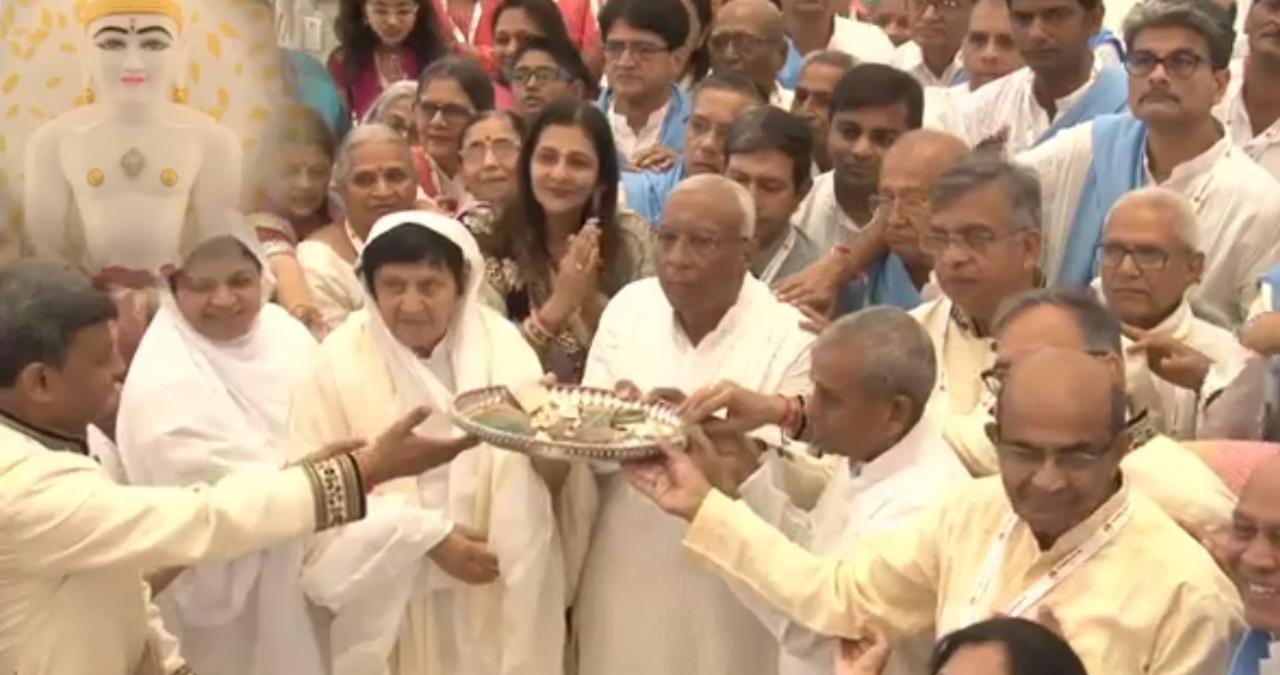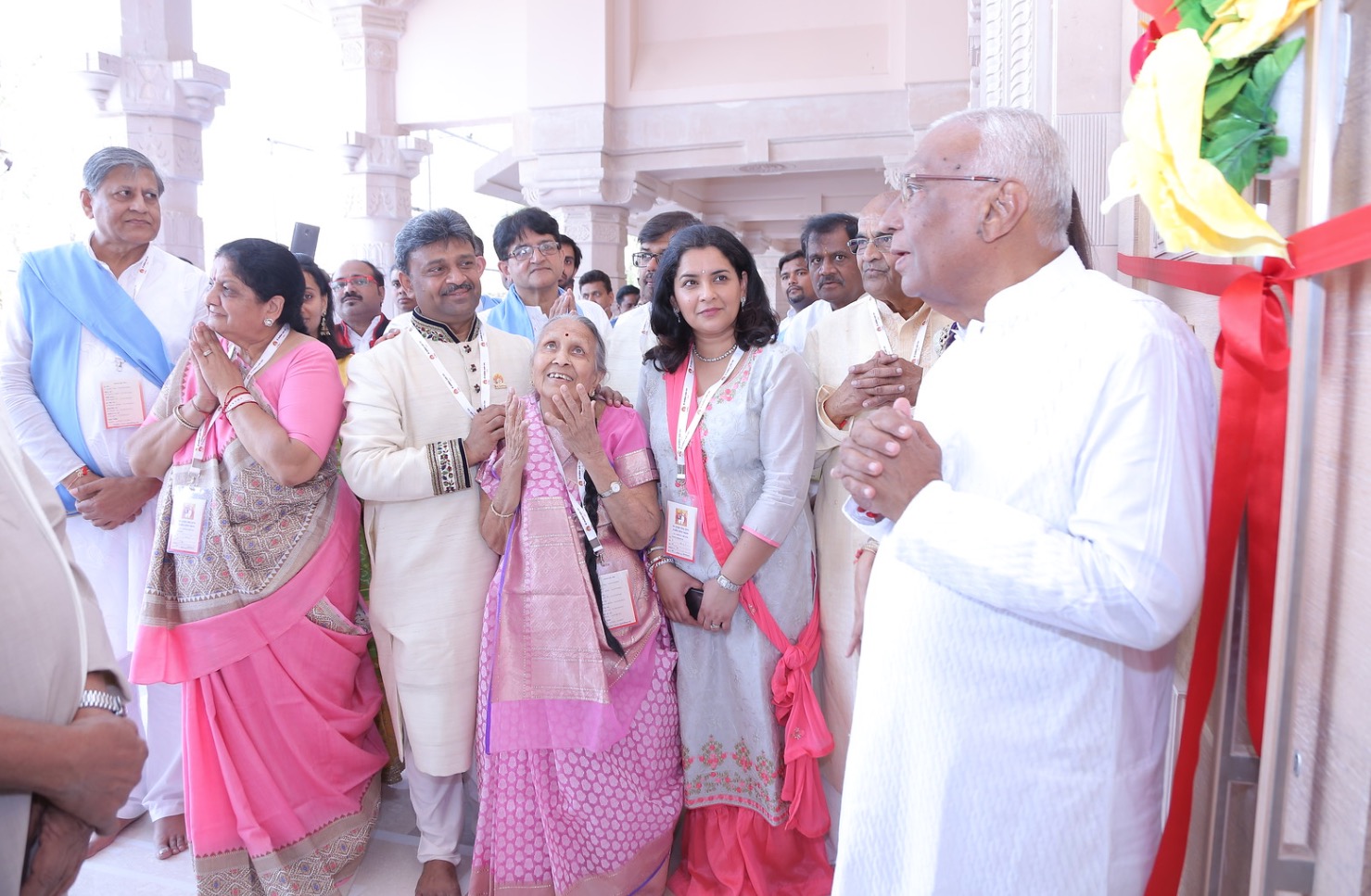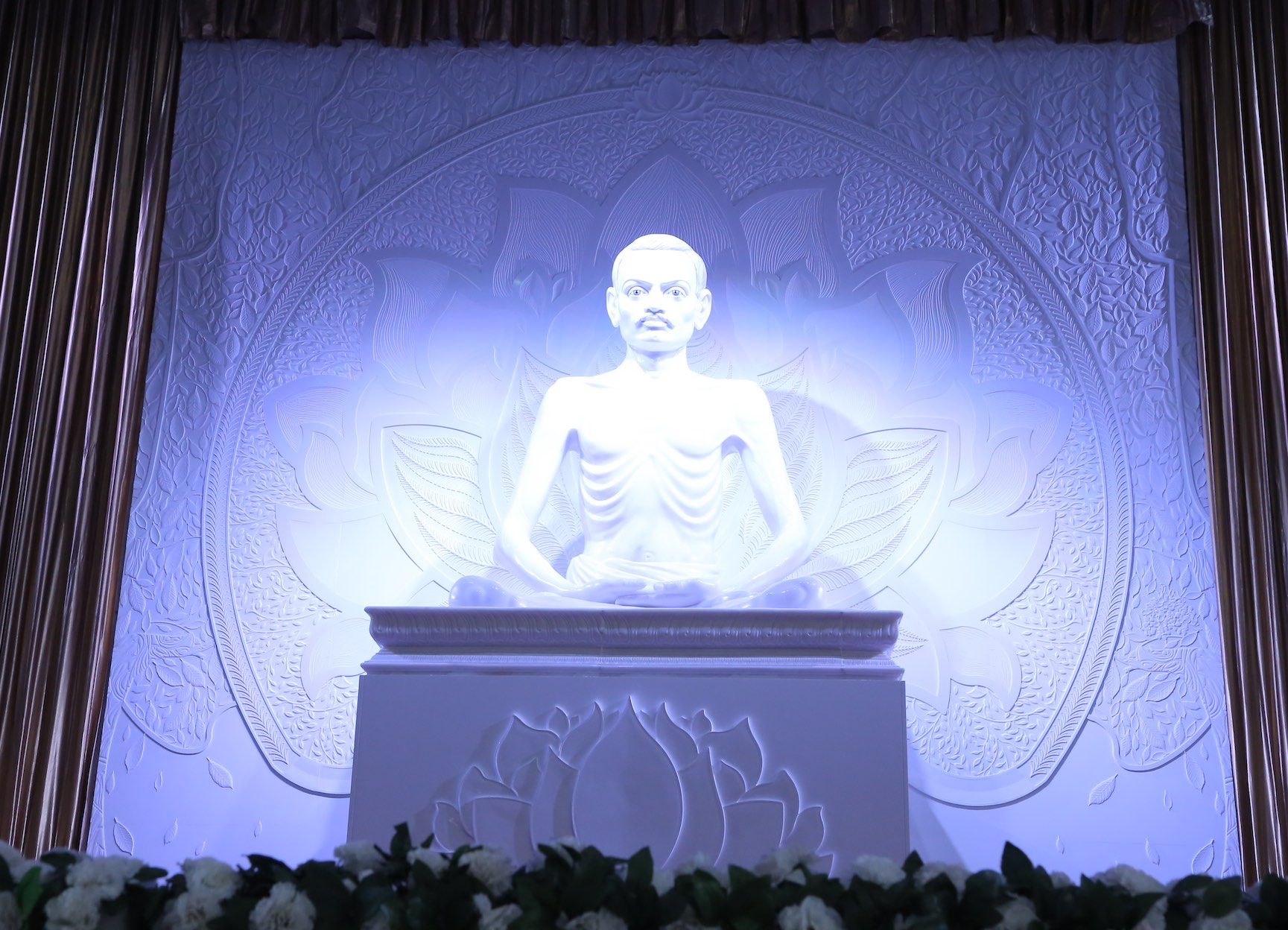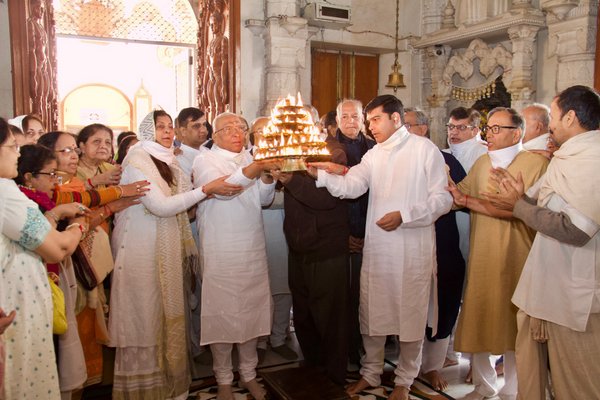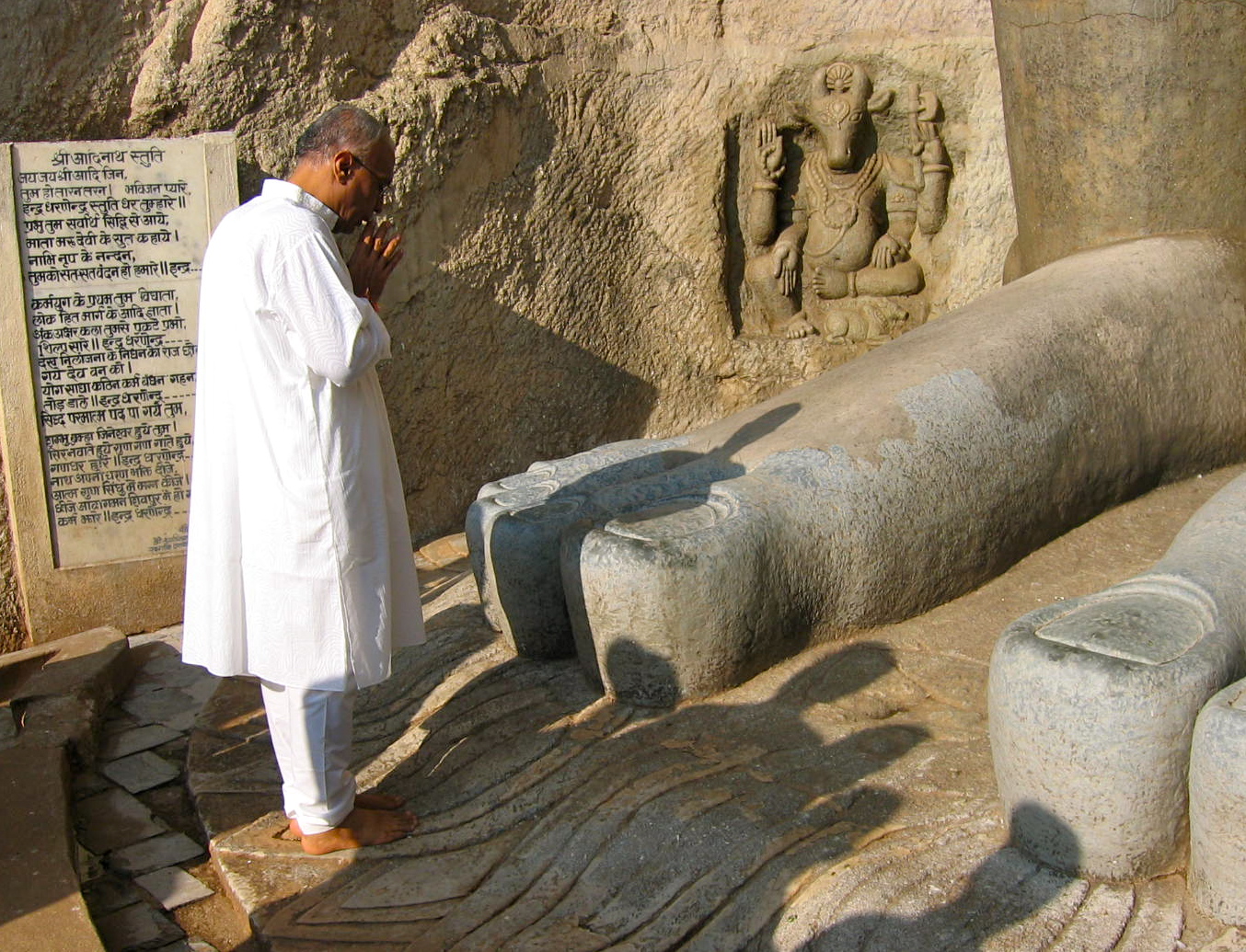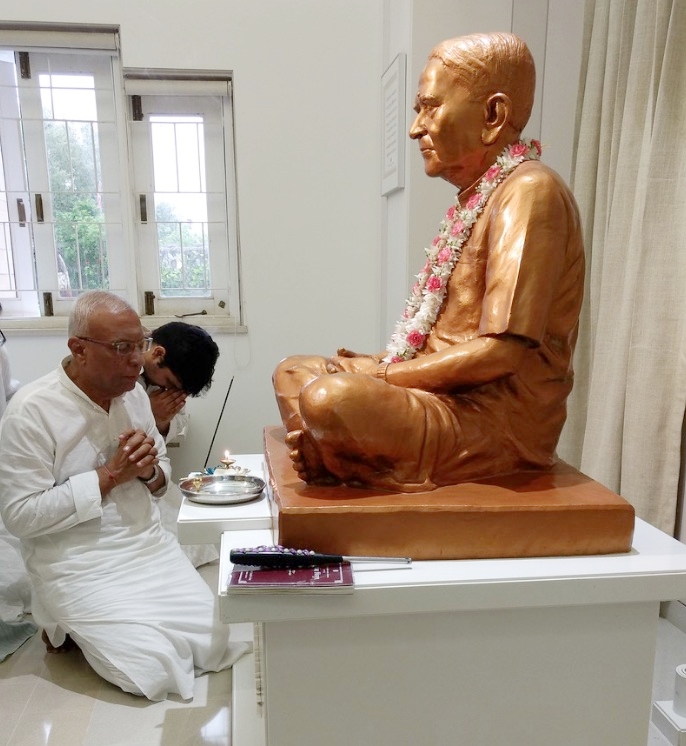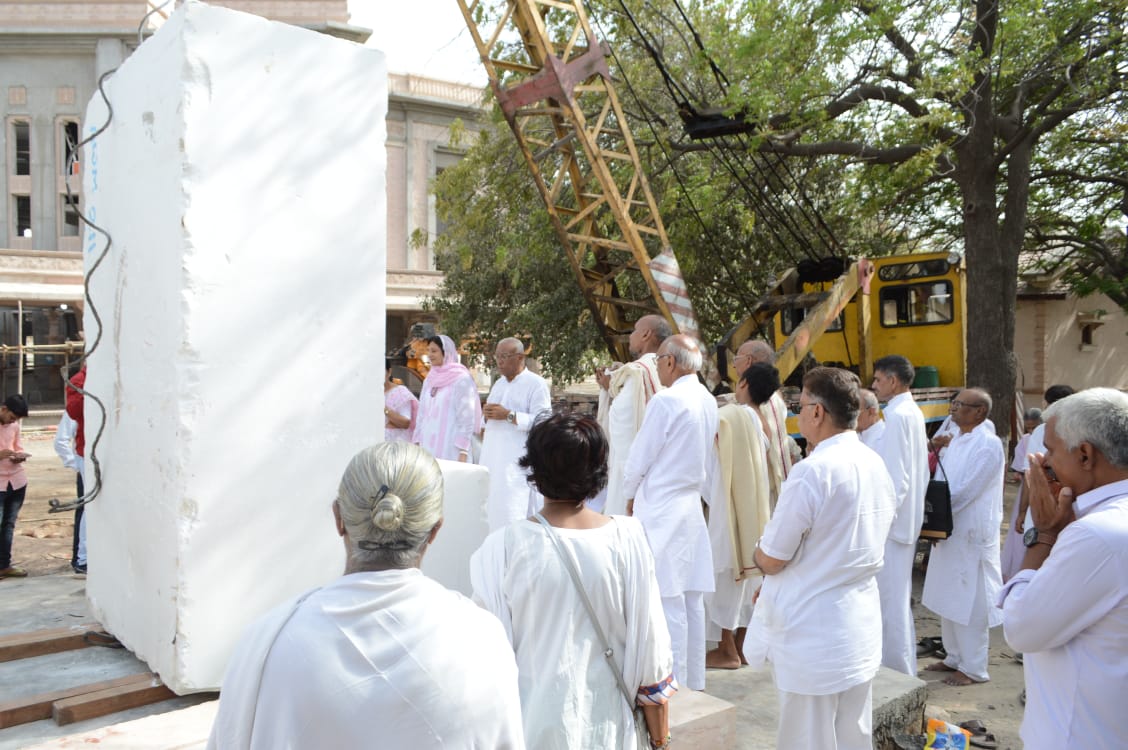Shrimad Rajchandra’s Love For Veer
Its the 13th day of rising moon in the month of Chaitra and yet again mumukshus have gathered at Bhalani residence to celebrate the Janma Kalyanak of Lord Mahavir. Bhalani residence can confidently boast about one of the most beautiful Ghar Derasars in the world, if not the most beautiful one.
Lord Mahavir was born in the royal Kshatriya family to King Siddharth and Queen Trishladevi. Named as Vardhman (ever-growing) by the parents, Lord Mahavir was destined to become the last Tirthankar of this Avasarpini Kaal (regressive cycle). Tirthankars (the absolutely enlightened Lords who can liberate others) are born due to the intent from their previous birth to perpetuate the path of liberation for all living beings. Bhagwan Mahavir preached the principles of non-violence, equanimity, pluralism to name a few. Saadhaks of the current time owe everything to him as He was the Arihant dev who showed us the path to become a Siddh Bhagwan.
On this day it is only befitting that we understand how seamless is the amalgamation of Lord Mahavir’s teachings and Shrimad Rajchandra’s life. The living embodiment of Self-realisation, the ever-so-compassionate Param Pujya Bhaishree announces to do a swadhyay on how Param Krupalu Dev Shrimad Rajchandra worshipped Lord Mahavir, how deeply etched Lord Mahavir was in Shrimad’s heart. Bhaishree begins by establishing the connect between Shrimad Rajchandra and Lord Mahavir.
Bhagvan Mahavir and Shrimad Rajchandra
Shrimad in his own words had been a seeker for many a lifetime. The inner revolution in his life began at the young age of seven when he recollected his past lives (jaati smaran gnaan) whilst enraptured in deep contemplation.
Bhaishree quotes Param Krupalu Dev where Shrimad cautions us all by saying that, “When I was Lord Mahavir’s last disciple, a tiny bit of distraction from the atma-bhaav (pramaad) has resulted in births and deaths for 2400 years!” That soul which had the greatest fortune of all, to be under the tutelage of Lord Mahavir in person, to hear Lord Mahavir from close quarters has taken the form of Shrimad Rajchandra in our time. There is little doubt that this great soul must have further elevated its spiritual heritage from the time of Lord Mahavir. It is certain that Shrimad’s birth in this era is to spread the pious message of Lord Mahavir to the world. Through Shrimadji several souls should find the necessary acceleration in their spiritual journey.
Bhaishree describes an exchange of Param Krupalu Dev with the king of Idar. Krupalu Dev when in the jungles of Idar, speaking to king explains his deja-vu that the last Tirthankar and his disciples (Gautamswami and more) have been here. All his disciples have attained salvation leaving one behind which has been born in this time. It is possible that, that soul (the last disciple of Bhagvan Mahavir) is responsible for upliftment of a lot of other souls. Param Krupalu Dev could not have been more direct yet subtle about giving out this truth to us common masses for our own spiritual liberation. Bhaishree explains that for a soul like Shrimad’s, who has seen Bhagwan Mahavir in physical form, who has walked the earth with Him and His disciples, the certitude of Bhagwan Mahavir’s path can only be imagined.
Shrimad’s steadfast belief, love and devotion in Bhagwan Mahavir’s mul moksh marg
Bhaishree cites Shrimad from across his works wherever Shrimad has talked about Bhagwan Mahavir.
The religion conceived by unfettered (Nirgranth) Gods cannot be justly described by any adjectives. Bhaishree urges the mumukshus to give an adjective to the religion. He adds, the best that thoughtful souls can come up with is that giving an adjective is not possible.
Soul has aimlessly wandered since time immemorial only due to lack of such religion.
Bhaishree explains that all of us are still here in human form is because we have not understood this incomparable religion in its true sense or we are still trying to make sense of it. Due to lack of or inaccurate understanding of the original path, the efforts that we have put all this while has not helped us reach our goal of liberation.
Bhaishree proceeds with citations as,
“‘I love justice. Veer(Bhagwan Mahavir)’s style is that of justice. Developing an understanding is very rare.’
‘Uttaradhyayan sutra should be read and understood again and again.’ ”
“‘Understand even one sentence of Bhagwan Mahavir.’
‘We should firmly accept that the extraordinary path that brings peace to the soul as it drinks the ambrosia (પરમ શાંત રસમય ધર્મ) described by the equanimously detached Lord is totally true. Due to the soul’s unworthiness and the absence of a personification of truth (Satpurush), it cannot be understood. Yet there is no other totally uplifting cure for the disease of embodiment. Contemplate over this.’”
Shraddha (Faith) versus Aagrah (dogmatism)
There is a big difference between believing in something and being conservative about it. Shrimad, despite being an ardent, truthful follower of Bhagwan Mahavir's path is definitely not a fanatic.
Shrimad in one of his letters (letter no. 64) writes
पक्षपातो न मे वीरे न द्वेषः कपिलादिशु !
युक्तिमद वचनं यस्य, तस्य कार्य: परिग्रह: !!
- श्री हरिभद्राचार्य
What I preach or believe is not because of the bias for Mahavir or out of hatred for any other preacher but I do have a liking for, immense love for, anything that helps me realise true Self, helps me discover my Soul.
In another instance Shrimad writes, ‘On careful scrutiny of other religions I find the religion preached by the equanimously detached souls the best’.
Shrimad’s rock solid devotion for Bhagwan Mahavir's principle of Pluralism
Shrimad was also a firm believer in multiplicity of viewpoints (સ્યાદવાદ). The truth is always multidimensional. At any time, the truth can never be realized by means of a single-point of view.
He writes, “એકાંતવાદ એ જ જ્ઞાનની અપૂર્ણતાની નિશાની.”
Ekantvaad (one sided point of view or one sided truth) is the sign of incomplete knowledge.
He writes a quatrain expressing his views on pluralism as
“જિન સોહી હૈ આતમા, અન્ય હોઈ સો કર્મ;
કર્મ કટે સો જિનબચન, તત્વગ્યાનીકો મર્મ
રચના જિન ઉપદેશકી, પરમોત્તમ તીનું કાલ;
ઇનમેં સબ મત રહત હૈ, કરતેં નિજ સંભાલ.”
Shrimad's intention to revive the exquisite path of liberation
“દિન પ્રતિદિન જૈનદર્શન ક્ષીણ થતું જોવામાં આવે છે, અને વર્ધમાનસ્વામી થયા પછી થોડાં એક વર્ષમાં તેમાં નાના પ્રકારના ભેદ થયા દેખાય છે તે આદિના શાં કારણો?”
- પત્ર 713
It was Shrimad’s immense love for Bhagwan Mahavir and his mul moksh marg (the original path to liberation) that moved him to spread the path further. An extraordinary, almost unfettered, great personality like Shrimad wanted masses at large to benefit from the path of liberation like he himself had experienced and benefitted. He constantly harbored feelings of ‘સવિ જીવ કરું શાશન રસી' (May all the souls be interested and persevere in this path) out of his fathomless compassion for every soul in the universe. Detailed plans were in place to take up the mission but only once his own state is elevated to a level where he can do justice to his followers. He was on his way to elevate his soul at the highest level, free himself of all his worldly commitments and renounce his worldly relationships.
Shrimad turns down the feelings of reviving the moksh marg
As seen, Shrimad had strong feelings of reviving the path during the early years (Age 19-20) but Shrimad later surrendered to karmic fruition (પ્રારબ્ધ) and focussed on dwelling exclusively within the realm of his soul (આત્મધ્યાનમાં નિમગ્ન).
Shrimad had picked up this thumb rule from his idol Bhagwan Mahavir to not propound the path until and unless you elevate your soul to highest possible level and construct your readiness for the same. Shrimad has written about the state of his soul in very direct and frank words to his soulmate Saubhagbhai in several letter exchanges. In one of such letters Saubhagbhai requests Param Krupalu Dev to reveal his true self so that common masses may benefit from the person of Param Krupalu Dev. In response to that letter Param Krupalu Dev writes,
“જગતના કલ્યાણને અર્થે પુરુષાર્થ કરવા વિષે લખ્યું તો તે પુરુષાર્થ કરવાની ઈચ્છા કોઈ પ્રકારે રહે પણ છે. તથાપિ ઉદયને અનુસરીને ચાલવું એ આત્માની સહજ દશા થઇ છે, અને તેવો ઉદયકાળ હાલ સમીપમાં જણાતો નથી; તો તે ઉદેરી આણવાનું બને એવી દશા અમારી નથી.”
Feelings of spreading the path do exist somewhere inside but currently abiding by the karmic fruition has become the default way of life and such time (time for spreading the path) I don’t see it in the near future. In yet another letter (no. 621) he writes,
“એક વિનંતિ અત્રે કરવા યોગ્ય છે કે… બહાર આ આત્મા સંબંધી હાલ કંઈ પ્રસંગ ચર્ચિત થવા દેવા યોગ્ય નથી; કેમકે અવિરતિરૂપ ઉદય હોવાથી ગુણવક્તવ્ય હોય તોપણ લોકોને ભાસ્યમાન થવું કઠણ પડે; અને તેથી વિરાધના થવાનો કંઈ પણ હેતુ થાય; તેમ જ પૂર્વ મહાપુરુષના અનુક્રમનું ખંડન કરવા જેવું પ્રવર્તન આ આત્માથી કંઈ પણ થયું ગણાય.”
There is a request worth doing here. No discussion about this (Param Krupalu Dev’s) soul should yet happen outside of the close circle of people. As the common masses believe what they see, the current circumstances (no external renunciation) are such that people would not believe inspite of the virtues of this soul and as a result it would do more harm than good for the common people. Shrimad turning down the feelings of spreading the path in hindsight, also is a sign of his infinite compassion for the souls of this universe. It is worth mentioning here that Shrimad wanted to renounce all worldly possessions (take diksha) at a very young age but his mother did not agree and emulating Bhagwan Mahavir he too chose to be in sansaar and persevered to be equanimously detached (વીતરાગ).
Adulation (પ્રમોદ) for Bhagwan Mahavir’s virtues
“જેના એક રોમમાં કિંચિત પણ અજ્ઞાન, મોહ કે, અસમાધિ રહી નથી તે સત્પુરુષનાં વચન અને બોધ માટે કંઈ પણ નહીં કહી શકતાં, તેનાં જ વચનમાં પ્રશસ્ત ભાવે પુન: પુન: પ્રસક્ત થવું એ પણ આપણું સર્વોત્તમ શ્રેય છે.”
- Letter 52
Souls who have not an ounce of ignorance or attachment left, is equanimous, and about whose teachings nothing can be further said, it is of ultimate upliftment that we bind ourselves with words and teachings of such souls.
At this point Bhaishree said, “When we think of virtues of Bhagwan Mahavir it amazes us so much. Even thoughts of virtues of such souls are the reason of shedding so many karmas from our soul. Adulation for such souls and hence such virtues helps us progress on our path rapidly. Such immense appreciation should arise from within.” Bhaishree urges the mumkshus to sustain this state of continuous and innate adulation for Bhagwan Mahavir’s virtues for 24 hours and to see the benefits for themselves.
Bhaishree concludes his swadhyay at this point and thereafter mumkshus put Bhaishree's words in action by remembering Bhagvan Mahavir's life incidents, his virtues and singing his glory wholeheartedly. Brahmnisht Vikrambhai took over for Bhakti. In his moving and soul-touching voice he starts the bhakti with a pad ‘ઝહેર અમારાં ઉતારો’. The tempo is then lifted by jaap of ‘Aum Shree Mahaviray Namo Namah’.
The evening could not have had a better conclusion than the pad ‘Veer haank’ - a call to the Veer in each of us. Mumukshus could feel the power singing the words of
‘વારસ અહો! મહાવીરના, શૂરવીરતા રેલાવજો,
કાયર બનો ના કોઈ દી, કષ્ટો સદા કંપાવજો,
રે! સિંહના સંતાનને શિયાળ શું કરનાર છે?
મરણાંત સંકટમાં ટકે, તે ટેકના ધરનાર છે.’
